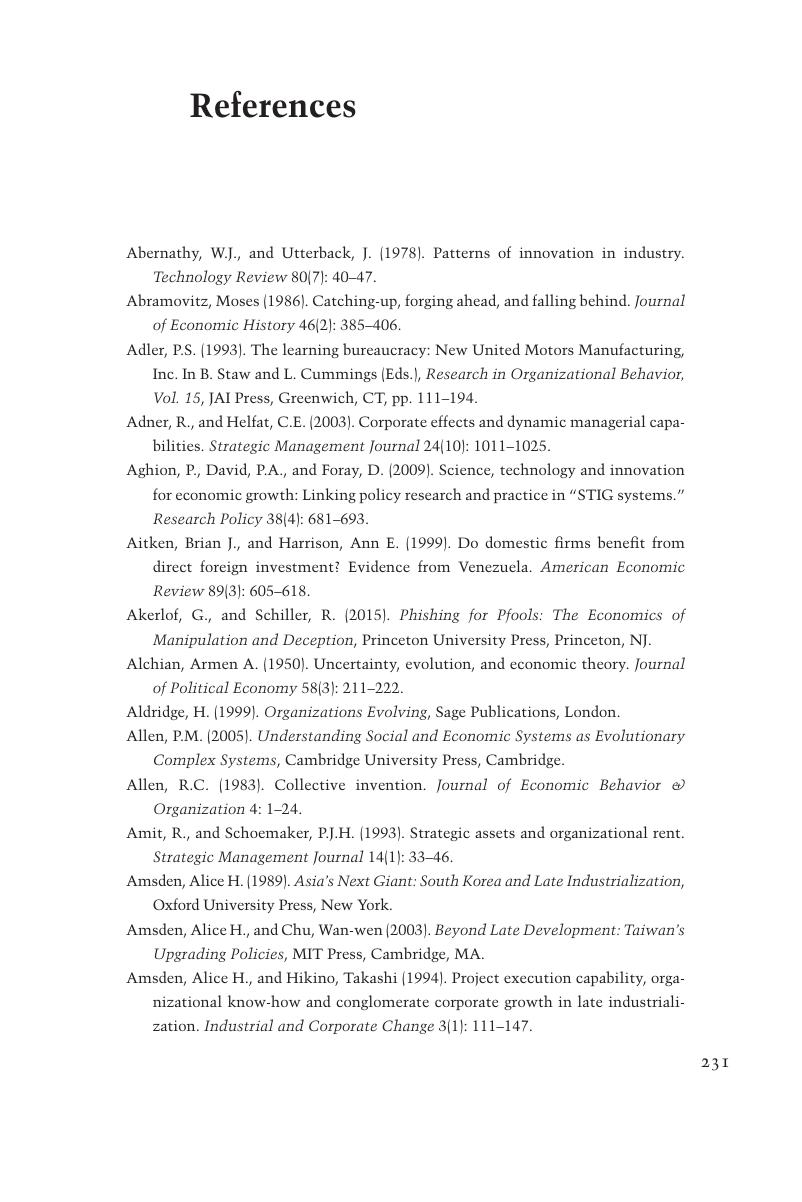Book contents
- Modern Evolutionary Economics
- Modern Evolutionary Economics
- Copyright page
- Contents
- Figures
- Notes on Contributors
- 1 Economics from an Evolutionary Perspective
- 2 Technological Advance as an Evolutionary Process
- 3 The Behavior and Capabilities of Firms
- 4 Schumpeterian Competition and Industrial Dynamics
- 5 Evolutionary Perspectives on Long Run Economic Development
- 6 Economic Catch-up by Latecomers as an Evolutionary Process
- 7 The Evolution of Evolutionary Economics
- References
- Index
- References
References
Published online by Cambridge University Press: 21 April 2018
- Modern Evolutionary Economics
- Modern Evolutionary Economics
- Copyright page
- Contents
- Figures
- Notes on Contributors
- 1 Economics from an Evolutionary Perspective
- 2 Technological Advance as an Evolutionary Process
- 3 The Behavior and Capabilities of Firms
- 4 Schumpeterian Competition and Industrial Dynamics
- 5 Evolutionary Perspectives on Long Run Economic Development
- 6 Economic Catch-up by Latecomers as an Evolutionary Process
- 7 The Evolution of Evolutionary Economics
- References
- Index
- References
Summary

- Type
- Chapter
- Information
- Modern Evolutionary EconomicsAn Overview, pp. 231 - 262Publisher: Cambridge University PressPrint publication year: 2018
References
- 1
- Cited by



